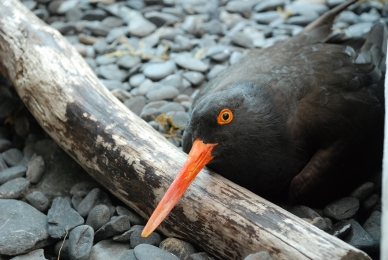Alaska Species Explorer
All
x
- – No known individuals remaining.
- – Known only to survive in captivity, or as a naturalized population outside its historic range.
- – Extremely high risk of extinction in the wild.
- – High risk of extinction in the wild.
- – High risk of endangerment in the wild.
- – Likely to become endangered in the near future.
- – Lowest risk. Does not qualify for a higher risk category. Widespread and abundant taxa are included in this category.
- – Not enough data to make an assessment of its risk of extinction.
- – Has not yet been evaluated against the criteria.
Black Oystercatcher
- – No known individuals remaining.
- – Known only to survive in captivity, or as a naturalized population outside its historic range.
- – Extremely high risk of extinction in the wild.
- – High risk of extinction in the wild.
- – High risk of endangerment in the wild.
- – Likely to become endangered in the near future.
- – Lowest risk. Does not qualify for a higher risk category. Widespread and abundant taxa are included in this category.
- – Not enough data to make an assessment of its risk of extinction.
- – Has not yet been evaluated against the criteria.
The black oystercatcher is a keystone species along the North Pacific shoreline and is believed to be a particularly sensitive indicator of the overall health of the rocky intertidal community. The black oystercatcher is a U.S. Fish and Wildlife Service “Species of Concern” because of its small population size, restricted range, and threats to habitat from human and natural factors that may potentially limit its long-term viability.
Black body with pink legs, long red-orange bill and yellow eyes; no seasonal change
Clams, mussels, limpets, chitons and small fish
Rocky seashores in the intertidal zone.
Highly vulnerable to natural and human disturbances. Major threats include predation of eggs and young by native and non-native predators; coastal development; human disturbance (e.g., induced nest abandonment, nest trampling); vessel wakes, especially when they coincide with high tides; shoreline contamination such as oil spills
- They do not build a nest; they make a depression called a “scrape” in rocky beaches.
- Their eggs are camouflaged (olive-buff with brownish-black blotches) to blend in with the rocks.
- Contrary to what their name implies, they do not feed on oysters.














